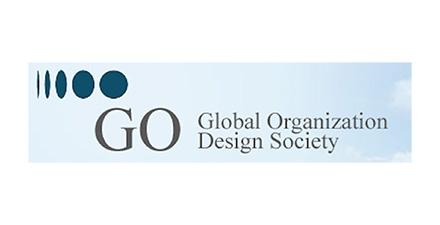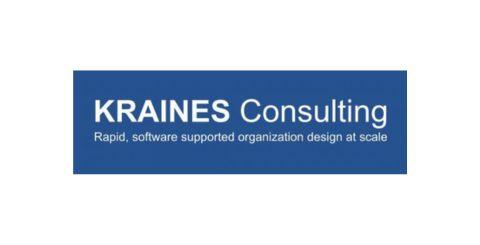Accountability Leadership
How to Strengthen Productivity Through Sound Managerial Leadership

Obtain this book
Book Review: Accountability Leadership by Gerald Kraines
Introduction
"Accountability Leadership: How to Strengthen Productivity Through Sound Managerial Leadership" by Gerald A. Kraines, M.D., presents a comprehensive framework for organizational effectiveness grounded in managerial accountability. Kraines, as president and CEO of The Levinson Institute, draws on decades of consulting experience across industries and integrates the pioneering work of Elliott Jaques and Harry Levinson to develop his LEAD system (Leverage, Engage, Align, Develop).
The book challenges prevailing management trends like extreme empowerment, self-directed teams, and matrix organizations, arguing that these approaches have undermined proper accountability systems, leading most organizations to operate at only 30-40% of their potential. Kraines offers a return to fundamental principles of organizational design that respect the natural properties of managerial systems while avoiding the pitfalls of traditional command-and-control bureaucracy.
Main Themes
The Crisis of Accountability
Kraines begins by addressing the poor reputation of "accountability" in modern organizations, where it has become synonymous with blame and punishment. He redefines accountability as "the obligation of an employee to deliver all elements of the value that he or she is being compensated for delivering, as well as the obligation to deliver on specific output commitments with no surprises."
This conception distinguishes between the employment relationship and that of independent contractors. While contractors can ethically profit at a client's expense (provided they deliver the agreed result), employees are accountable for increasing their employer's profit, not making profit at the employer's expense.
The book identifies two distinct types of accountabilities:
- Fixed Accountabilities:
- Commitment - Fulfilling output commitments exactly as defined
- Adherence - Working within defined resource constraints and policies
- Relative Accountabilities:
- Reach - Signing on for ambitious yet achievable targets
- Fit for purpose - Ensuring outputs support their intended purpose
- Stewardship - Managing company resources efficiently
- Teamwork - Adjusting to accommodate others' work for maximum organizational value
Kraines illustrates these concepts through numerous case studies, including one about "Sam Travers," a manager at a metal fabrication company who exhibited increasingly dysfunctional behavior. Investigation revealed that Sam had been given accountability for increased machine output without the necessary authority over machine operators, who reported to different managers. The mismatch between accountability and authority had driven his desperate attempts to influence through intimidation.
The LEAD Framework
The core of Kraines' approach is the LEAD system, which provides the organizational structure for the book:
L - Leveraging potential: Leadership's essential function is to maximize the collective judgment and capabilities of the organization. Kraines defines work itself as "the application of judgment to an assignment over the time it takes to complete it." The ability to effectively deploy judgment varies across levels of organizational complexity.
Drawing on Jaques' research, Kraines describes distinct types of mental processes corresponding to increasingly complex organizational roles:
- Level 1: Unconnected assertions (OR-OR reasoning)
- Level 2: Pattern-making (AND-AND reasoning)
- Level 3: If-then connecting (algorithmic thinking)
- Level 4: Multiple parallel decision trees (mental orchestration)
E - Engaging commitment: Building on Harry Levinson's concept of the "psychological contract," Kraines explains how to harness employees' intrinsic motivation. He challenges the prevalent "jackass fallacy" (from Levinson's work) that assumes employees are inert and need external motivation to perform.
The psychological contract has three dimensions:
- Common purpose - Shared values and goals
- Constructive distance - Balancing control, recognition, and privacy
- Mutual support during change - Helping each other adapt
Kraines cites the example of Francis Petro, a CEO who transformed a specialty metals manufacturer by establishing clear accountability while simultaneously engaging employees' commitment. While some employees resisted the higher standards, most appreciated the clarity, purpose, and recognition of their contributions.
A - Aligning judgment: Since managers cannot directly control subordinates' every decision, they must align thinking through "context setting." This involves explaining the "big picture," sharing the manager's reasoning, seeking subordinate input, defining clear QQT/Rs, and establishing "teamworking context" to guide lateral coordination.
Kraines introduces the QQT/R framework (from Jaques) for clear delegation:
- Q₁ = Quantity
- Q₂ = Quality
- T = Time
- R = Resources
He illustrates this through the case of "Lorie Adamson," a senior VP at a biotech firm who instructed subordinates to "Cut costs, NOW!" without providing context. Subordinates cut corners that compromised quality and safety, leading to embarrassment when Lorie gave investors a facility tour. Had she properly set context about the purpose and parameters of cost reduction, this misalignment could have been avoided.
D - Developing capability: Kraines distinguishes between current effectiveness and potential (capability to handle complexity). Development encompasses both coaching to enhance effectiveness in current roles and mentoring to develop capability for future roles.
The book presents a systematic approach to talent development based on Jaques' research showing that potential matures in predictable patterns throughout adult life. Organizations can assess current maximum capacity, project career potential, evaluate demonstrated effectiveness, identify development needs, and establish coaching and mentoring programs.
Organizational Design Principles
Kraines challenges the false dichotomy between rigid hierarchy and unstructured empowerment, arguing instead for "good hierarchy" - properly structured organizations with the right number of levels, appropriate spans of control, and clear lines of authority.
He presents four building blocks for organizational design:
- Levels of role complexity - Proper number of management layers
- Three-level processes - Ensuring lateral relationships have common managers
- Functional alignment - Properly grouped business functions
- System stewardship - Mechanisms for maintaining system integrity
Through case studies of companies like Northern Pine (a forest products company) and Titanium Enterprises (a manufacturing firm), Kraines demonstrates how restructuring organizations according to these principles can dramatically improve performance. Northern Pine achieved a 35% increase in output despite a 20% reduction in personnel after implementing proper structural alignment.
Cross-functional Coordination
One of Kraines' most valuable contributions is his framework for cross-functional coordination without matrix management. Instead of dual reporting relationships, he advocates for clear vertical accountability enhanced by well-defined indirect accountabilities:
- Advising - Providing critical information
- Recommending - Suggesting trade-offs
- Coordinating - Bringing people together for common direction
- Monitoring - Persuading others to adjust actions near boundaries
- Auditing - Stopping actions outside defined limits
- Prescribing - Instructing emergency actions under extreme conditions
- Service-giving - Providing internal services
- Support for process improvement - Helping improve processes
These indirect accountabilities create proper lateral coordination without undermining vertical accountability. Kraines illustrates this through a case study of a wire manufacturing plant where production delays weren't communicated between departments, resulting in idle workers and equipment. By establishing clear advising accountabilities, the plant significantly improved coordination without complex matrix structures.
Leading Change
Kraines devotes significant attention to implementing change through "adaptive leadership." He notes that all change involves two threats:
- Loss - Of what has been
- New demands - Requirements to master new skills
Effective change leadership requires:
- Acknowledging losses
- Providing support through transitions
- Serving as transitional anchors
- Renegotiating psychological contracts
The book outlines four phases of critical change:
- Initial impact - Shock and disbelief
- Disorganization - Anxiety, fear, and unfocused energy
- Recovery - Experimentation and learning
- Reorganization - Assimilation and integration
Key Insights
- Accountability and Authority Must Be Aligned: The most fundamental insight in "Accountability Leadership" is that accountability without commensurate authority creates stress, frustration, and dysfunction, while authority without accountability leads to entitlement and self-absorption. Organizations must carefully align these elements at every level.
- Work Is About Judgment: Kraines defines work as the application of judgment to solve problems. This perspective shifts focus from activities to decisions, emphasizing that organizations hire people not for their ability to follow instructions but for their capacity to exercise judgment within an accountability framework.
- Organizations Have Natural Levels of Complexity: Drawing on Jaques' research, Kraines argues that organizational roles naturally fall into distinct levels of complexity, each requiring different mental processes. Effective structures honor these natural levels rather than artificially flattening or overly layering organizations.
- Context Setting Is Essential for Alignment: Managers must communicate not just what needs to be done (QQT/R) but why and how it fits into the bigger picture. Context setting enables subordinates to make intelligent adjustments that support the organization's goals even when specific instructions haven't been given.
- Potential Develops in Predictable Patterns: Human capability to handle complexity matures throughout adulthood following predictable patterns. Organizations can assess current potential and project future potential, allowing for more accurate talent development and succession planning.
- Teams Need Individual Accountability: Contrary to popular team-building approaches, effective teams require clear individual accountabilities for both outputs and teamwork, not vague "collective accountability."
- Cross-functional Coordination Requires Indirect Accountabilities: Rather than matrix management, organizations should establish clear vertical accountability enhanced by well-defined indirect accountability relationships (advising, recommending, coordinating, etc.).
- Change Involves Loss and New Demands: All organizational change creates twin challenges of loss (requiring acknowledgment and mourning) and new demands (requiring support and learning). Leaders must address both aspects to successfully implement change.
- Three Types of Management Fantasy: Kraines identifies three dysfunctional approaches to management:
- Superstretch-forgiveness systems - Setting impossible goals but forgiving failure
- Empowerment-entitlement systems - Giving authority without accountability
- No excuses, unforgiving systems - Unrealistic targets with harsh consequences
- Development Requires Both Coaching and Mentoring: Immediate managers should coach subordinates to enhance current effectiveness, while skip-level managers should mentor subordinates-once-removed to develop capability for future roles.
Conclusion
"Accountability Leadership" offers a comprehensive, integrated approach to organizational effectiveness that challenges many contemporary management practices. While some might find Kraines' affirmation of hierarchy and managerial authority traditional, his approach is actually quite progressive in its focus on engagement, development, and psychological contracts.
The book's value lies in its synthesis of rigorous theoretical foundations (from Jaques and Levinson) with practical applications derived from Kraines' extensive consulting experience. Rather than offering simplistic solutions or the latest management fad, Kraines provides a coherent framework that addresses structure, process, and people development as an integrated whole.
For executives and organization design consultants, the book provides a powerful alternative to the pendulum swings between centralization and decentralization, command-and-control and empowerment that characterize much of management thinking. By systematically aligning authority with accountability, setting proper context, establishing clear expectations, and developing talent, organizations can dramatically improve their effectiveness.
The most compelling argument for Kraines' approach is his consistent observation that most organizations operate at only 30-40% of their potential. By implementing accountability leadership principles, he contends that organizations can potentially double or triple their effectiveness. While this requires significant discipline and commitment from leadership, the potential return makes "Accountability Leadership" essential reading for executives seeking to maximize organizational performance.





